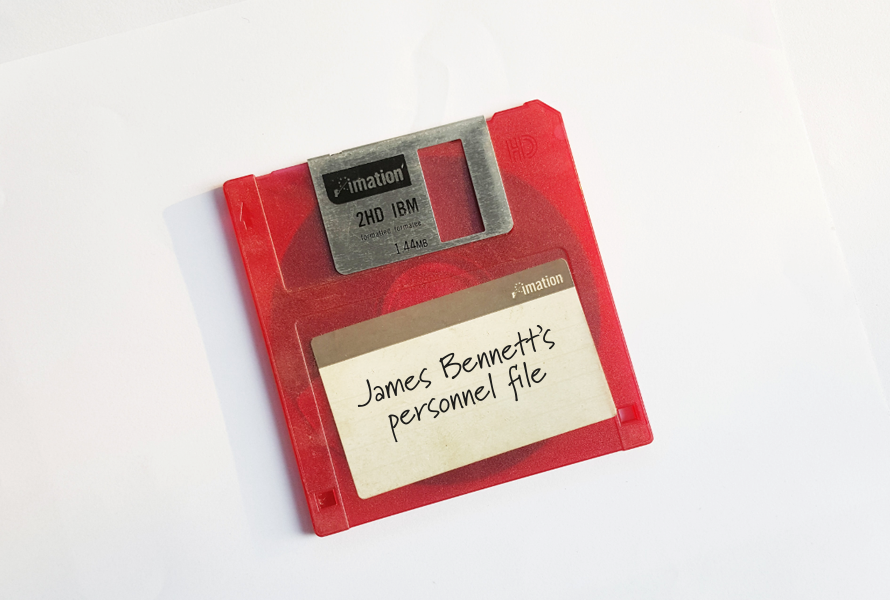STOP what you are doing and THINK.
Suspend, for a moment, all the frantic “doing.” Suspend it for just long enough to ensure that when the doing does re-start, it results in true transformation and not just short-term task driven ‘changes,’ / fixes only to today’s HR problems.
First – Which of these are you doing?: ‘Making a change’, ‘Delivering Change’, or ‘Achieving Transformation’? A challenging question in itself, because too often the words are used interchangeably resulting in the idea that they mean the same thing and the same things are required. In this context they do not. In this context, Change is a temporary state. Transformation is permanent.

- Water changes form, becoming ice under certain conditions. But when the heat is on, it melts – reverting once again to water.
- When burnt, Wood is transformed to ash and no amount of environmental change will turn that ash back into wood.
So…you made the bold decision to implement a new HRIS system, you are thrilled because the budget was approved, the expected ROI was established, and it will save people hours of “drudgery.” Relieve people from boring tasks. Allow these same people to make better use of their brains and time. You smile as you raise a glass of bubbly.
OMG! – delivery needed, must make a difference – show progress – deliver fast!
The knee jerk reaction is to reach for the Project Plan and GET GOING!
For water there is a way back – for wood there is none.
Fear not! I am not saying that to achieve transformation you must throw away the traditional (and important) action-orientated change and project plan! Action is essential; I am saying that transformation requires thought and the application of the old saying “More speed, less haste”
Transformation is the outcome of an equation:

These three combine in a way that allows people to “imagine” the new future, and it is only this imagined new future that genuinely motivates people to move. This willingness to move is then what drives and gives energy/focus to the actions outlined in the change management plan. Whilst fixing today’s problems, frustrations and pains is certainly useful, the advantages of transformation versus simple (and probably temporary) change will mean real progress. Transformation comes about from rethinking the future and our Aspirations.
Here are the 10 things worth considering if you want to play a role in re-wiring the thinking to achieve transformation from your new HRIS system implementation:
1. HRIS is a Catalyst: Appreciate that a new HRIS is a catalyst. HRIS change will not achieve lasting change / transformation on its own. Thinking that it will, is where the first level of “changed thinking” is required.
2. No way back: Have you closed the chapter on “how things used to work”? – have you made sure there is no way back? People cannot imagine or start a new chapter whilst they continue to re-read the previous one. Unanswered questions and old ways of doing things will keep popping up, derail progress & and place your programme at risk unless old ways of doing things are sealed off.
3. Deal in Dreams: Understand and accept that every one of your dreams can threaten someone else’s. Your expectations of what the new system may be, could be radically different to the expectations of others impacted by it. Not everyone will be equally happy so you will have to strike deals, and everyone (including you) must act democratically….and by everyone, I mean everyone – not just the HR Team.
4. Whose Reality? Take the time to understand what informs others’ current realities before you ask (or instruct) them to take risks. Remember also that their current reality cannot be changed with the same thinking that created it. Only once you understand their current reality can you ask them to start imagining a new one. Can they imagine this new future? Have they had time to even give it a moment’s thought? or have they been told that the ‘ExCo.’ has approved this long-awaited system, and naturally they should be over the moon about it regardless of the situation they are in?
5. Where the Rubber hits the Road: I once asked an enormously experienced Head of HR “What is your Talent Strategy?” The answer came as a surprise. “It is to provide the environment within which Managers manage the Talent in their Teams…because the Talent rubber hits the road with 1st line Managers”. If you are implementing talent processes – how is your thinking and, according to this Head of HR, more importantly, how is theirs?
6. Engagement not Instruction: Remember that telling people something is hugely different to engaging them. The objective must be the latter to reach a point where they “get it” – ‘getting it’ being the result of their own new thinking. People change not because they know or are told what to do. People change when they are motivated to do so. This is because there is a STARK difference in us all between accepting someone else’s idea and changing our own actions and behavior.
7. The Compelling Why: What are you doing sustainably differently? Be honest. Are you expecting others to change whilst you (and your team) remining on the same trajectory? What is your compelling “why”? Does everyone impacted or liberated by the new system have a compelling “why” i.e., why I need to do things differently, why I need to think about this differently? The what and the how are often addressed by traditional change management plans, but without a compelling WHY, change seldom drives meaningful transformation and longer-term progress.
8. Are you trusted? If people do not trust your intentions, or feel that they are being told “half-truths, or being manipulated, they will not give anything new half a chance. Why should they?
9. No question too small: Allow and embrace loads, and loads of questions, take the time needed to hear people even if you do not have the answers. Actively listen because when people feel heard, when they feel that they have been a part of the journey they are far more willing to take part in the change journey. No one likes to have things done to them, people want to be part of whatever is impacting them, even if they do not always agree. When people feel heard, they are far more motivated to support decisions that impact them.
10. How do I boil this Ocean? With the prospect of finally having a system, too many people seek to change everything all at once. Remember that we humans get fearful with too much change, so transformation is achieved in steps not one giant leap (it’s more of an evolution rather than a revolution). Go easy on yourself and others (especially those less involved in the project) by taking things one step at a time. By all means, start with fixing the biggest issues (the ‘low hanging fruit’) but start simply with small changes that wider stakeholders can easily digest. Gauge the appetite as you go along and build gradually. In other words, boil the Ocean one kettle at a time…. whilst being careful not to kill the fish.
In fact, it comes down to genuine dialogue and genuine inclusiveness. The time you spend “doing and being it” is the most important investment you can make, and it is best made before the fanfare of an official “kick-off.” When done correctly, the momentum you generate will significantly create a self-propelling project.
And yes, this may sound like a hell of a journey, and yes, it takes time – your time. But if you are spending all this money and effort, you may as well make it a transformational experience. We would much rather you become the hero when the true ROI is measured in 24 months’ time rather than the one who promised transformation but delivered only change in the HR department.
About the Authors
Bonita Field is Head of Customer Success at iXerv – Previously at Barclays /Absa Bank leading both National and Provincial Business Banking teams focused on solving clients business banking financial and transactional banking requirements. Bonita also spent time in the Business Banking strategy team, where she worked with the various regional teams in crafting compelling strategies to deliver both value for clients, and market share growth for the bank. Bonita’s gets excited about developing highly engaged, motivated, performance driven teams leveraging dialogue to drive increased connection across digitally distanced & fragmented teams. She is a firm believer in the possibilities inherent in the wisdom of the collective, and is passionate about creating the context within which people are able to reach their fullest potential.
James Bennett is CRO at iXerv and has 35 years’ experience in the HRIS / HCM Market, 20 of them in Senior Leadership roles. 12 of these years were spent leading Oracle’s HCM business in UK&I and Northern Europe, 4 years at Cornerstone on Demand and he established Sage People in 2016 when at Sage. James’ breadth of Industry knowledge spans both commercial and public sectors with almost every size of business – from 50 Employees to over a million staff. His views on ‘Change’ and ‘Transformation’ stems from 100’s of HRIS implementation programmes over this time – those that frustratingly failed to deliver to businesses and those that spectacularly succeeded.
Discover more here about Punch, iXerv’s HRIS technology for Mid-sized business, powered by SuccessFactors.




